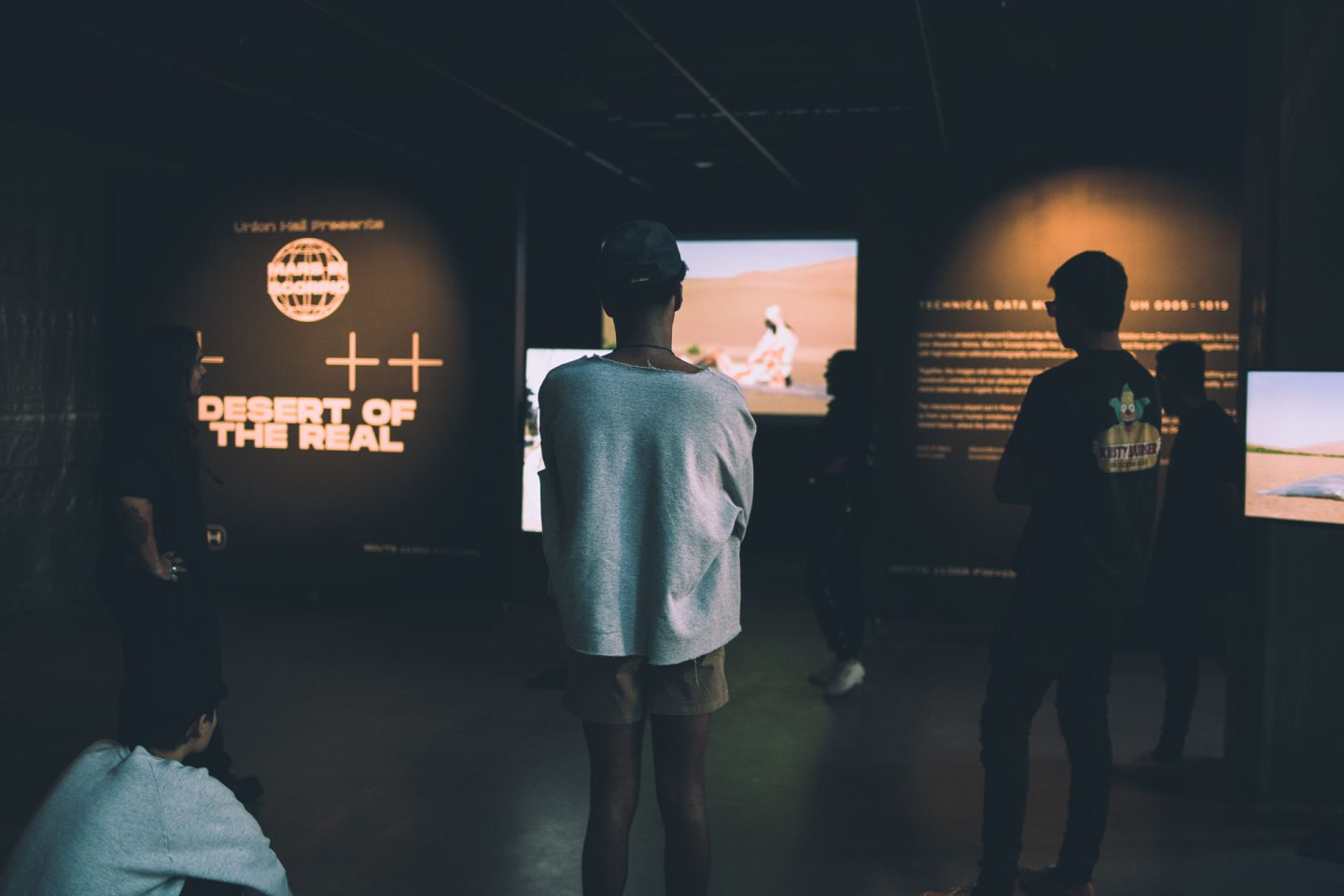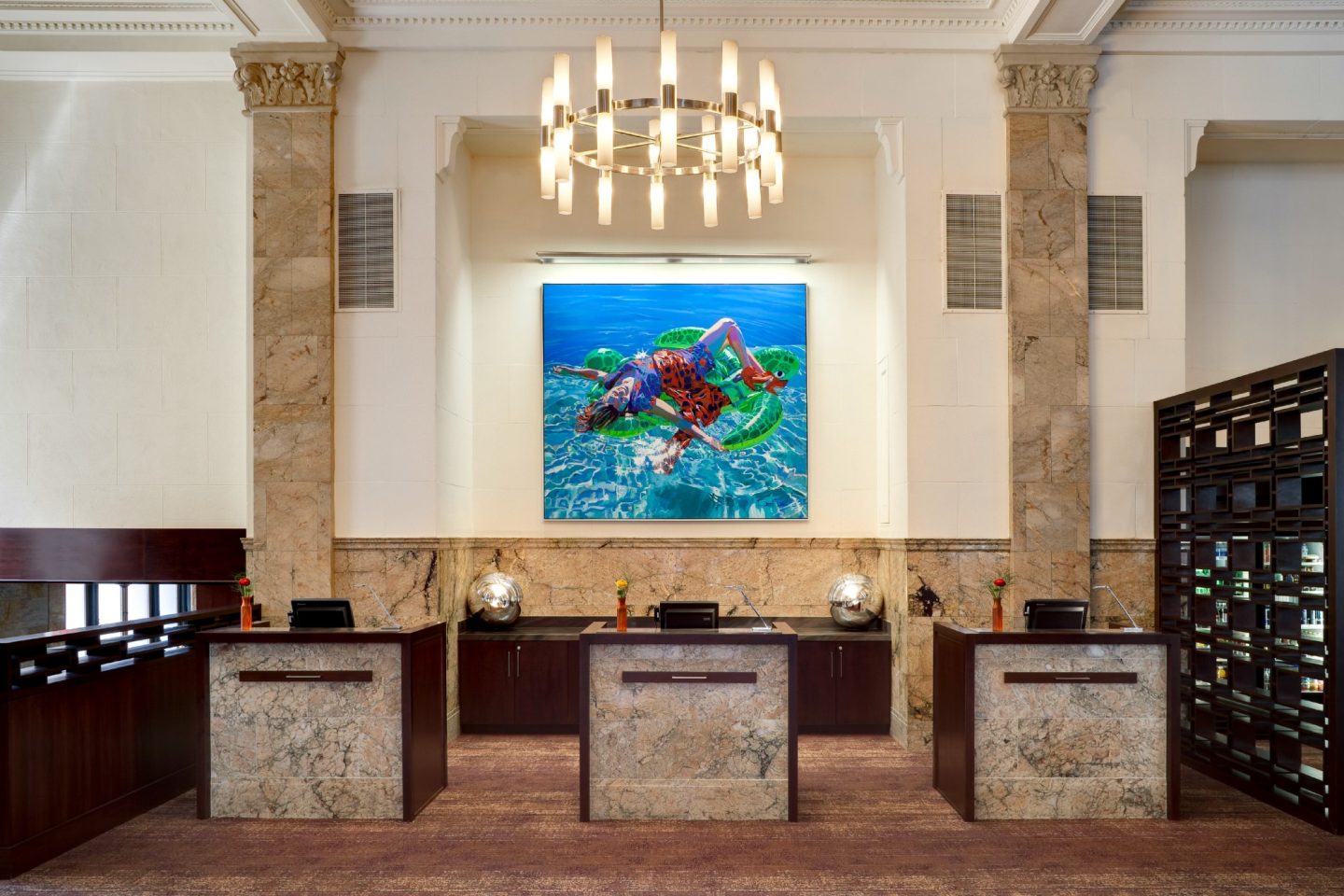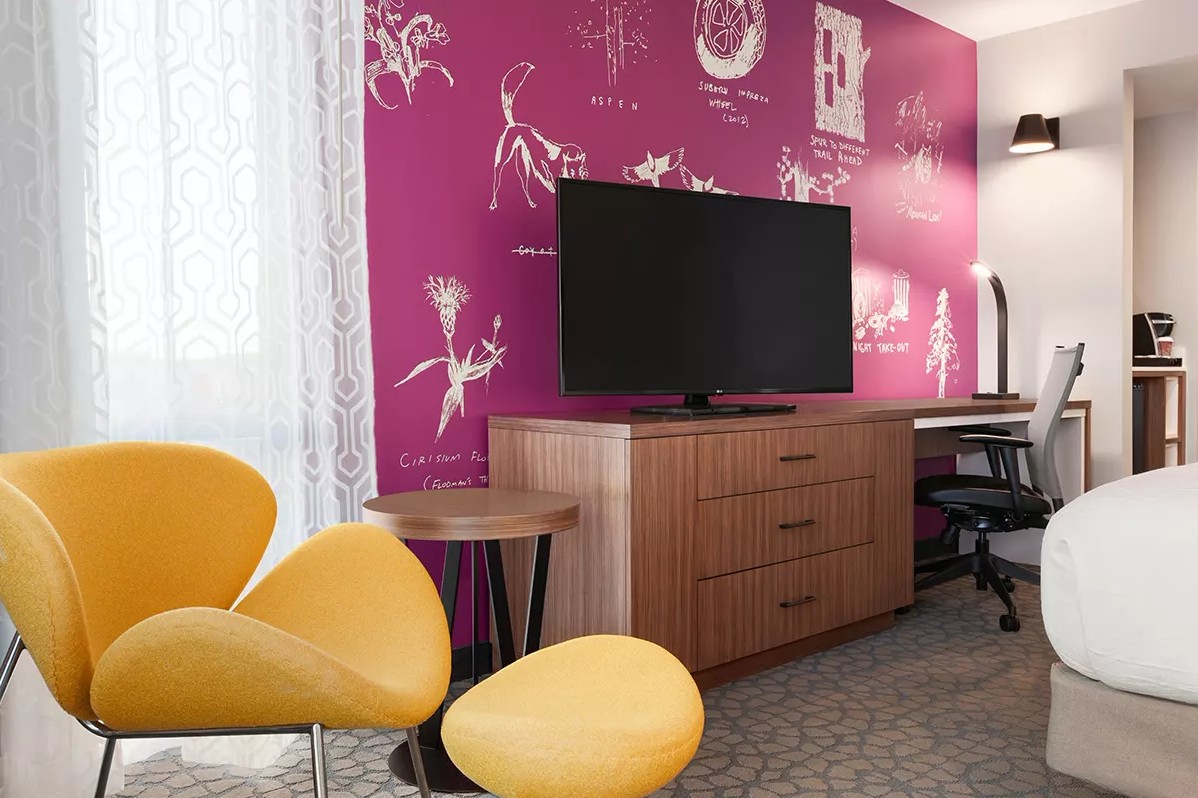Creating space for community through art
Fostering relationships in all the right places
As coworkers, companions and friends again converge in office environments, social gathering spots and more, spaces that foster collaboration and emphasize community are more important than ever. Architects and designers now have the obligation to create places that remind people of the surrounding cultural scenes and to inspire them to return to the outside world. With a plethora of art and culture within cities like Denver, Seattle and Atlanta, residents and visitors alike have anticipated consuming and engaging these experiences for what feels like ages now. One of the most straightforward approaches to reinvigorating the arts and culture scene is to utilize mixed-use spaces as a community gathering hub.
Is it possible to reactivate the lively society that existed before lockdown? Spaces like Denver’s Union Hall and the new Clayton Members Club and Hotel aim to use inclusive programming and an inviting atmosphere to encourage visitors to begin incorporating arts and culture into their daily lives again. With many theatres and venues still beginning the process of reopening after a year-plus long closure, mixed-use spaces that serve as host to corporate functions, weddings, family gatherings and more, will be at the forefront of cultivating culture into an adventure.

Inclusive Art Collections to Promote Diversity
Union Hall’s mission has been to foster an inclusive atmosphere meant to emphasize camaraderie and encourage collaboration. The space is intrinsically designed to facilitate community — with a prime location in the luxury multifamily property, the Coloradan, and in the midst of Denver’s metropolitan transit hub, Union Station — and feature local artists of diverse backgrounds and mediums. Over 60% of artists featured in Union Hall’s programming are members of the BIPOC or LGBTQIA+ communities. Artworks by these artists depict scenes that honor, acknowledge and critique their surroundings. It is essential that exhibitions offer a variety of points of view to urge patrons to explore deeper than the art itself.
Clayton Members Club and Hotel is taking a similar approach to re-immersing members, guests and onlookers in art and culture. The experience is filled with artworks from local artists like Brien Hollowell, Juan Usubillaga, Frank T. Martinez and Sandra Fettingis, whose pieces often incorporate messages of unity and inclusion, or spark conversation on different societal topics. Because BIPOC and female artists are repeatedly underrepresented in arts and culture — as reported in our Art of Representation white paper, only 3% of working artists are African American while making up 13% of the country’s population, according to the U.S. Census Bureau — mixed-use spaces that set the intention of being inclusive are becoming the nucleus of community engagement. In regards to community development, NINE dot ARTS’ responsibility is to inform and demonstrate how art can bring significant value to the table for businesses.
Business Benefits of Public Art
There are countless advantages to incorporating art into public spaces. One is the element of activation. Developers want to create a space that is going to have a “heartbeat”; a place where people want to come and spend their time; one that’s inclusive and welcoming. Everyone in commercial real estate wants placemaking that creates ROI. The question is: how do you do it? That’s where community involvement comes into play.
Another big aspect of community is social capital. When you’re building a property you have to ask: “What value am I bringing to the table?” “How am I bringing the highest and best use to this land, neighborhood, and community?” Social awareness and engagement hold weight in that valuation. There’s intangible value with social capital, meaning how people talk about the project when you aren’t there. What do they say about it? What do they post? Who do they tell when they leave? Engaging the community and having “buy-in” that is authentic from local influencers increases the value of your investment. Social capital can create “value” not tied to a dollar figure, but rather a long lasting merit that fuels emotion and creates memories.

So, how does public art drive community engagement? Take our installation in the San Diego Gaslamp District for example. For this project, we committed to working with the local community and discovered artists who were just finishing their degrees. We commissioned a bold painting from local artist Sarah Stieber for the Courtyard Marriott San Diego lobby, coaching an emerging artist through the entire process — from the commission inception to project reports and even submitting the invoice. Along the way she was sharing her progress with a growing social media audience, creating a big buildup of the art coming to life. Once the property opened it gave her audience the exciting opportunity to see that work of art in real life. Sarah then chose to celebrate her 21st birthday at the hotel and invited her friends to the restaurant for a reveal, resulting in genuine and authentic engagement that in turn spread the word about the property itself. When Halloween came around, people dressed up like the painting’s character! The art became a built-in branding and marketing tool to raise awareness for the project and give people an emotional tie to the place, because they know the artist who made this creation.
In essence, you want to create an emotional bond and that connection can be perfectly executed through a human experience. It’s easy to dismiss an object if you don’t know the person who made it and the story behind it. But once you know the story, even if the thing itself isn’t something you love, you have this new appreciation of the human experience of creating — and that’s inspiring. Ultimately, you develop authentic connections that lead to long-term brand loyalty.
Mixed-Use Facilities for Collaboration & Creativity
As workers return to office spaces left vacant, they are craving collaboration to generate ideas amongst one another. To promote comfortable, safe spaces that allow employees to engage with each other and work together on new strategies and ideas, organizations should consider art that stimulates creativity. Clayton Members Club and Hotel takes the traditional principles of a co-working space and social club and molds it into a modern age magnet for creatives and business professionals.
Projects like Bonfils-Stanton Foundation utilize the concept of different programming, exhibitions and collections that incorporate the community two-fold — by actively featuring artists of that area, and by weaving the local history into the collections. Bonfils-Stanton’s newly renovated office space located in the Santa Fe Arts District has a collection of artworks by local artists that reflects both the approach of the community and mission of the organization. Underscoring the purposeful elements throughout the design, Bonfils-Stanton provides dual-language pamphlets with collection notes for guests of all backgrounds to appreciate the artworks within its space.
Nurturing community is up to artists, designers, businesses and organizations using an “all-hands-in” outlook towards many workers who were removed from arts and culture face-to-face for an extended period of time. The vivaciousness of art in any form will reinvigorate employees, visitors, tourists and residents to create new ideas, build stronger connections and push the needle towards greater diversity and inclusion.
Community Spaces for Gathering & Learning
Community projects like Perry Lane Hotel, UNC Charlotte Marriott Hotel and Conference Center and Hotel Commonwealth, where we worked with key stakeholders like students, faculty and community members, become legacies. Through these collaborations you can create multigenerational heritages by teaching community members and providing learning opportunities.

A prime example is our Beyond the Studio program with CU Boulder for our collection at Hilton Garden Inn and Embassy Suites, where we partnered with the University to match a graduate student mentor, Lisa Solberg, with a current student, Johnny Defeo, to create custom artworks for the property. Lisa created a massive painting in the lobby and then coached Johnny on how to install custom murals in each guest room. One wall in each of the 170 rooms was painted hot pink and then stenciled with various flora and fauna of the Boulder area from the dozens of custom stencil patterns he’d designed to create unique installations throughout the hotel. Because of this partnership, we produced a dynamic environment in a commercial space that is typically monochromatic and flat.
In many ways, every project we do has community orientation, that’s basically the foundation of how we work. Community spaces naturally attract people to be more collaborative, fueling creativity and diverse thought, all of which positively impact businesses’ financial health. Bottom line, art is good business and good community.